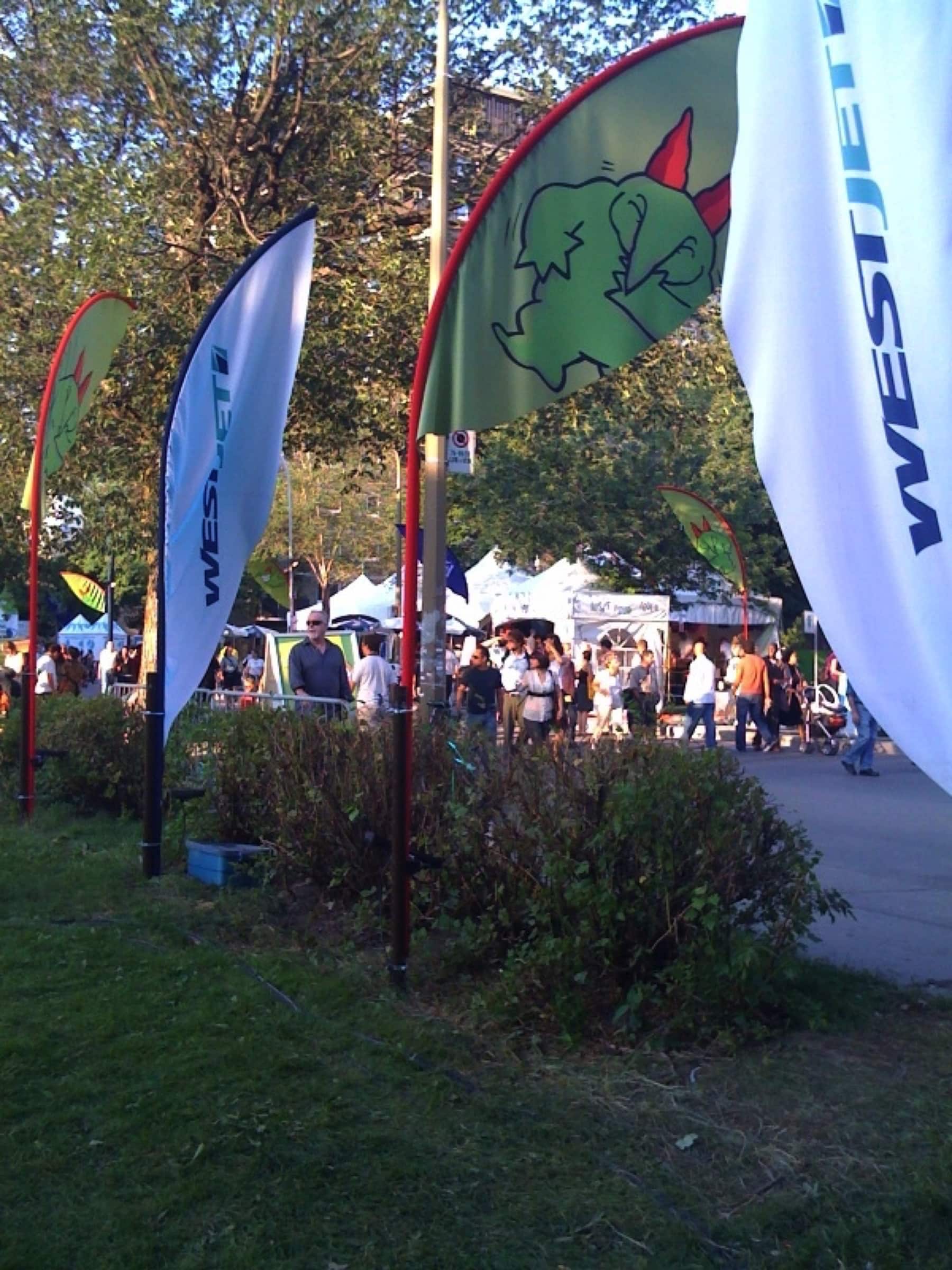Chances are that on a future display order at M&M Graphic, a representative will ask customers this question: will the sublimation canvas be installed indoors or outdoors? outside? And if the latter, for how long?
The question may seem strange, even useless for some, but make no mistake! It turns out to be more relevant. What most people don’t know is that sublimation fabric printing is created using water-based inks. This therefore means that the inks are not designed to resist eternal UV rays and, consequently, they cannot withstand prolonged exposure to the sun for a long time.
But what is increased sun exposure?
Let’s be clear: it is not by leaving an umbrella in the sun for a week or two that the colors will be altered, we know that. But at the same time, there is not just one right answer. It all depends on the context. A little explanation is in order. Several factors must be taken into account when judging the degree of intensity of sun exposure.
How long will the canvas be exposed to the sun?
Is the canvas installed indoors?
If so, then no worries. The only discoloration that could happen to a canvas exposed to the sun indoors is in a case where, for example, it is permanently installed in a shop window for say more than three or four years, and that this showcase would be totally lit by the sun all day and every day. On the contrary, if the canvas is installed on a wall, in a room without direct sunlight, it can then last for years, even forever!

Is the canvas installed outdoors?
If yes, for how long? Is the display only for one summer and is it umbrellas on a terrace? If so, no problem! Sublimation printing generally lasts one to two seasons without being altered when the products are used every day outdoors in a very sunny place. When we talk about “all season”, we are referring to the summer season in Quebec and this generally corresponds to the months of May to October inclusive. This is the festival season as well. In Quebec, it is also the time of year when the days are longer, warmer and more pleasant, from spring to fall. This explains that. In another example, if the display is outdoors, but protected from the weather (e.g. under a roof, stretched in a wall frame) and without exposure to the sun, it could last longer and even overcome the harshness of the Quebec winter.
However, sublimated fabrics installed outdoors are not guaranteed for more than one summer season in Quebec and we do not recommend prolonged outdoor installations in winter. A flag or a tent used outdoors during a winter event (for example the 24 Hours of Tremblant), but which is brought inside in the evening so that the products are protected from bad weather at night, should not not suffer premature deterioration. Conversely, a flag permanently installed outdoors risks being damaged during the winter, due to the sometimes intense weather here in Quebec.

Intensity of sun exposure: direct rays or indirect rays?
This was discussed a little earlier in this article, but whether the sun’s rays hitting a canvas are direct or indirect is a very important factor as well.
Here are some examples :
Direct rays: Tents and flags are set up on the F1 floor on a beautiful hot Saturday in July. It is sunny, no clouds, and the products remain in place for four consecutive days for the duration of the event.
Indirect Rays: A huge mural covers the entrance to CCM Reebok’s headquarters. The wall in question is not a showcase wall, so the canvas is not in a place constantly exposed to the sun. On the other hand, the wall is perpendicular to a glazed wall which is flooded with sunlight half the year and in the afternoon only. During these periods, the sun shines on the mural, but the distance between the glass and the mural is more than ten feet.